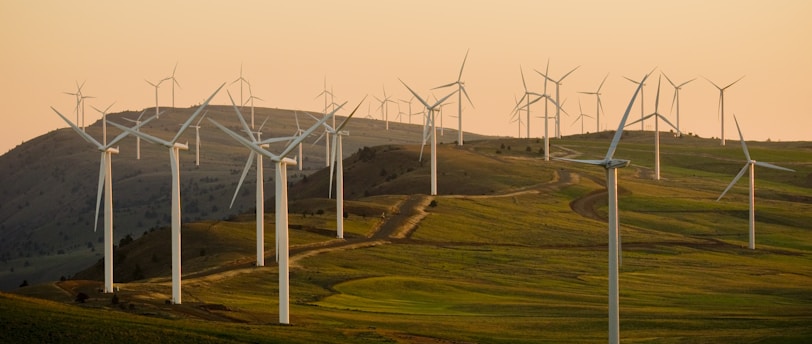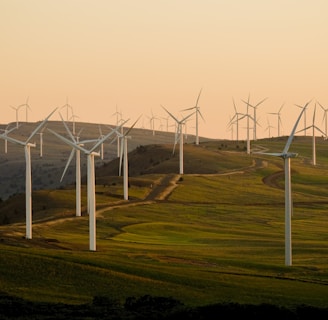The Fight against Industrial Windfarms and Their Impact on Communities
What’s wrong with a windfarm, you say, and what is a windfarm anyway?
Stephanie Johnson
3/26/20253 min read


Recently, a JP in another county reached out to me about a potential problem soon to affect the quality of life in Arkansas - windfarms. She said the wind companies are “on the move” in Arkansas, and they are working overtime to get as many windfarms as possible.
What’s wrong with a windfarm, you say, and what is a windfarm anyway? A windfarm is a system of monstrous wind turbines at a given location intended to generate power. Some of these permitted windfarms in Arkansas call for wind turbines up to 698’ tall. That’s gigantic! Windfarms are known for killing migratory birds, causing excess noise, attracting lightning, and decreasing surrounding property values, not to mention causing an eyesore once they are abandoned. But don’t they produce “green energy,” you ask? Hardly. The wind turbines are huge, clunky, obtrusive, break down often, and only generate power when the wind is blowing. If you just arrived in Arkansas in March, you might think this is a good market for windfarms, given all the March wind we have experienced; however, a month doesn’t create a “wind market.” Highways in the Midwest are often dotted with non-functioning wind turbines, and if you stop and walk around any one of them, you’re likely to find several dead birds. As you can tell, I’m not a fan.
In addition to environmental issues, windfarms are notorious for reducing property values. The National Association of Realtors says that homeowners within one mile of a commercial wind turbine can experience an 11% loss in property value following the announcement of a new commercial wind energy project. Other information shows up to a 40% loss of property value. The winners here are the landowners who agreed to have the turbines placed on their property, since they collect payments on a land lease, and potentially, the county government, due to the property taxes generated. As for everyone else, they gain nothing and are likely to lose money and quality of life.
Windfarms also pose dangers to the local community. In Mechanicsville, Iowa, a wind turbine was struck by lightning and caught fire. The fire caused one of the blades to come off and then plunge tip first into the soil beneath it. With these structures being - by far - the tallest thing in the sky at a given location, the likelihood of lightning strikes increases exponentially, posing fire danger and danger to animals beneath the structures.
Ashley, Carroll, Crittenden, Cross, Independence, Jackson, Phillips, Woodruff, Baxter, Boone, Newton, Clay, Yell, and Perry Counties are already being targeted by these big wind turbine companies. They intend to move quickly, but a few county Quorum Courts have successfully and overwhelmingly passed moratoriums on wind turbines to stop them from being erected. At their December 31, 2024, Quorum Court meeting, Madison County unanimously passed a wind turbine moratorium ordinance. This ordinance will be in effect for a year and will give the county planning board time to do their own research and to come up with a more permanent ordinance for wind turbines in the county. Carroll County recently passed a ban on new commercial wind and solar projects in the county. The Saline County Quorum Court has an opportunity to step up, be bold, and tell wind turbine companies they aren’t welcome in our heavily populated county.
State Representative Jeremiah Moore of Clarendon (Monroe County) proposed HB1198 in the state legislature, which would have limited the height of wind turbines to 150 feet. He was concerned about how windfarms might affect the duck hunting tourism industry, given that they are known to affect migratory patterns of birds. His bill ultimately failed, putting this issue back to individual counties to decide.
While some politicians salivate over the potential tax revenue generated by these structures, the reality is that wind turbine companies often seek special tax incentives or abatements. They have even been known to sue counties over assessed values (Dewey County, Oklahoma) seeking tax reductions of up to 60%. Essentially, these huge companies expect a tax break while John Q. Homeowner must pay the full tax rate.
On Monday, March 3rd, I proposed an ordinance to prohibit the construction of commercial wind turbines and presented a detailed hand-out to my fellow JPs as to why this ordinance is a necessary preventative measure. Twelve members of the 13-member Committee tabled the ordinance, so now they need to hear from you. Ultimately, we must decide - will the Quorum Court stand with Saline County residents who just want to live their lives in peace, or with big business and greedy politicians?
Justice of the Peace, Stephanie Johnson
Dedicated to serving the people of Saline County.
contact
© 2025 Stephanie Johnson for JP | Paid for by Stephanie for JP
